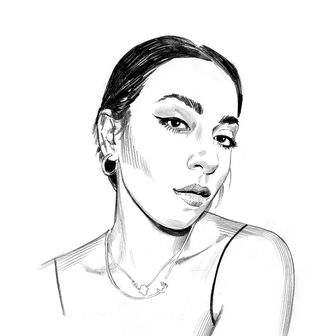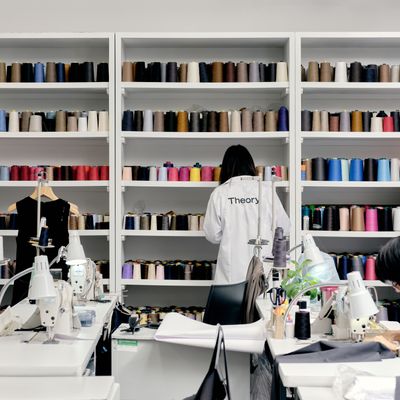
In recent years, Theory has become an “if you know, you know” brand, somewhat gatekept by devotees who’ve fallen in love with its understated approach to design (although it has been around since 1997). “We always stay honest,” global chairman Kazumi Yanai said as to why this brand seems to be fashion’s biggest secret.
This season, though, the label crafted a presentation to let the public in on its process. At its atelier in Chelsea, in a multilevel exhibition, attendees got a taste of the design process from start to finish.
Rather than a typical runway show, Theory held a guided tour through their cutting room, pattern room, sewing room and design studio. Inside, members of the Theory team, like patternmakers and skilled seamstresses, some of whom had been at the brand for more than 20 years, were at work: sketching, snipping, draping, and ironing samples that will eventually become part of a Theory collection.
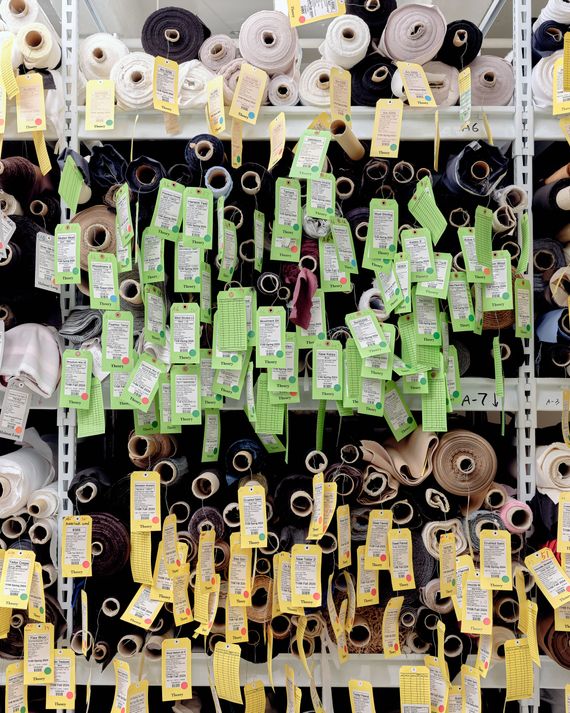
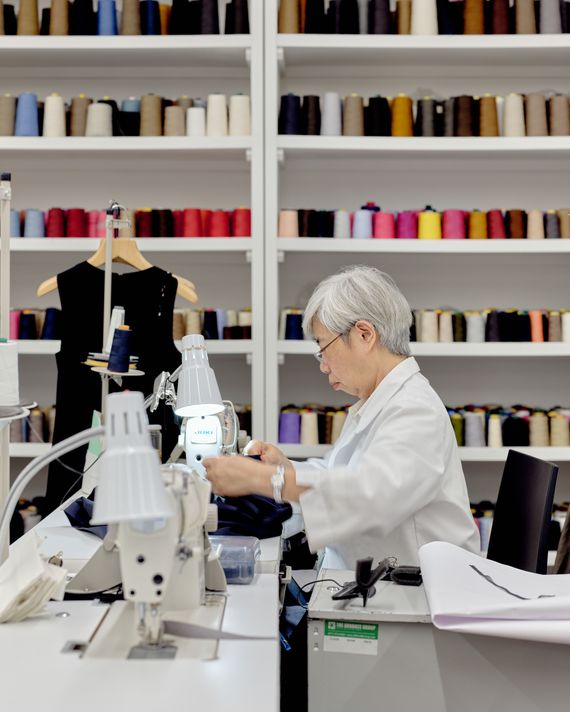
When I arrive, Wendy Waugh, the SVP of sustainability, meets me at the entrance, where a towering wall turned mood board filled with sketches, morose imagery, and rich-toned fabrics greets me. In that same foyer, a patternmaker in a white cloak and pushpin bracelet works on what seems to be the beginnings of a black blazer. I can’t help but feel impressed by his ability to work, undeterred and focused, with an audience looming over his shoulder. Waugh guides me into the cutting room, past reams of fabric carefully color-coded by season, where Rudy Gopie, head of the cutting room, giddily shows me how those sketches become parts and pieces of future garments. He click-clacks a few commands into a computer, which Gopie says will configure the pattern into a puzzle of sorts on a gargantuan piece of fabric to reduce waste, and a giant machine that takes up most of the floor gets to work. The robot’s arm whizzes across the swatch, following the curves and crevices of what looks to be a jacket. It isn’t until I arrive in the sewing room, where the brand’s seamstresses are bent over sewing machines, fashioning these snippets of fabric into clothing, that I see the garment begin to take shape.
Near the doorway of the sewing room, a few nearly finished samples are draped on a gaggle of mannequins. “You have to feel this!” Waugh tells me, pointing to a knit, navy coat. To the touch, it feels soft, almost cashmerelike. “Can you believe it’s wool?” Waugh asks me. “And we know the farm it came from and the farmers running it.”
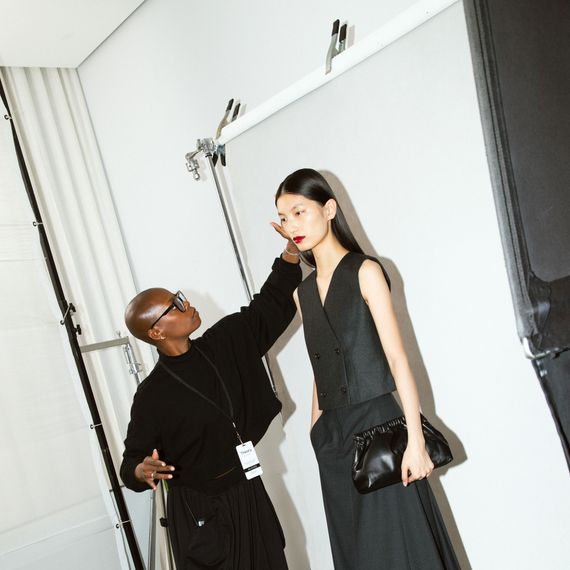
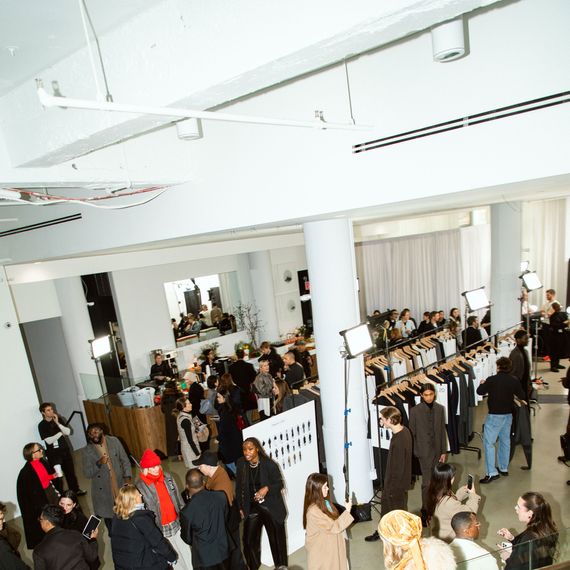
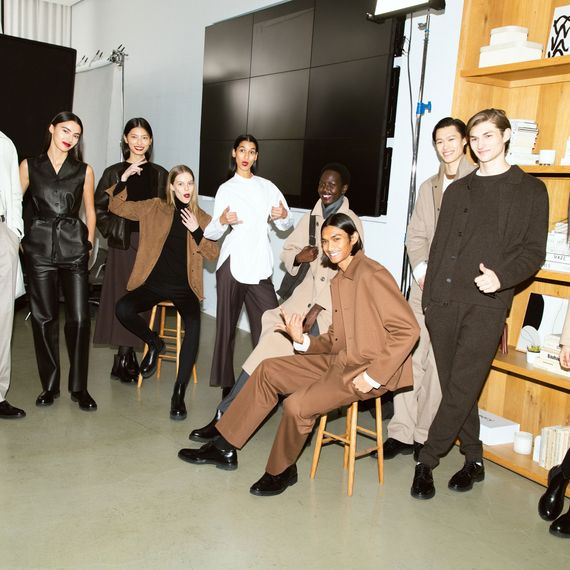
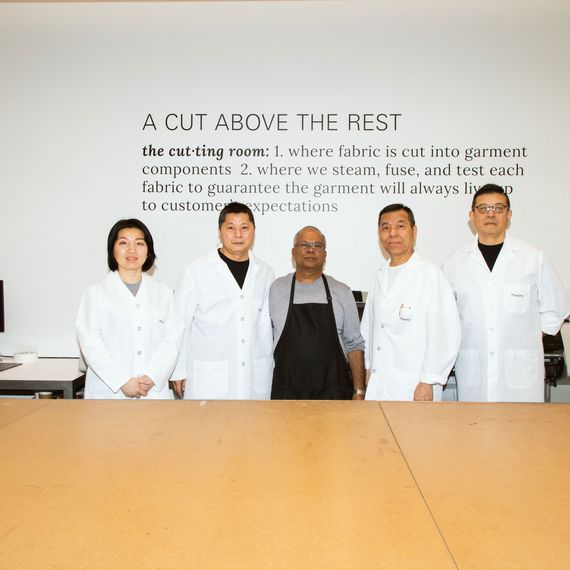
Downstairs, where the finished collection is worn by models milling about, waiting their turn to shoot for the brand’s lookbook as patrons watch, I see a cropped iteration of the same jacket made from the former’s scraps. Even though Theory’s clothing is still manufactured overseas, it’s surprising to see an atelier producing garments like this in New York. This is especially true during New York Fashion Week, when 12-minute, multimillion-dollar runway shows can sometimes feel devoid of this craft.
“The people we have in all these positions are experts at what they do,” Waugh says of the artisans at Theory. The atelier’s one-stop-shop approach when it comes to design and producing the samples is all intentional, meant to create a space in which seamstresses can give feedback to patternmakers and patternmakers to the design team and so on. What’s chicer than that?


